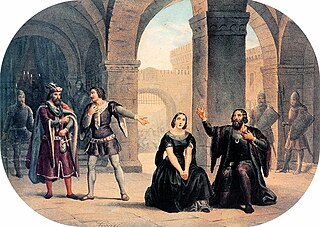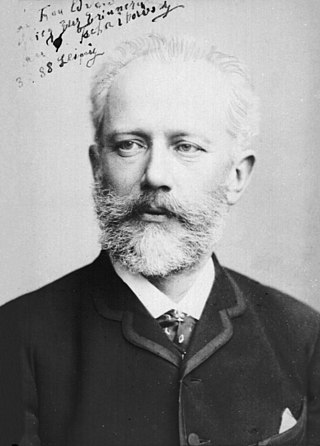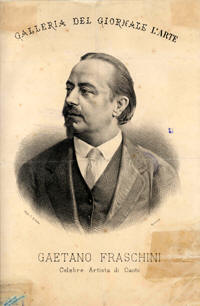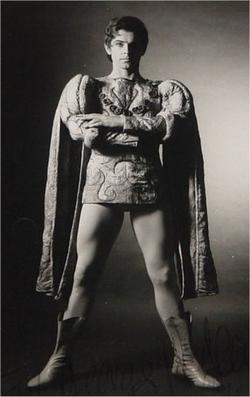Related Research Articles

The Royal Ballet is a British internationally renowned classical ballet company, based at the Royal Opera House in Covent Garden, London, England. The largest of the five major ballet companies in Great Britain, the Royal Ballet was founded in 1931 by Dame Ninette de Valois. It became the resident ballet company of the Royal Opera House in 1946, and has purpose-built facilities within these premises. It was granted a royal charter in 1956, becoming recognised as Britain's flagship ballet company.

Les vêpres siciliennes is a grand opera in five acts by the Italian romantic composer Giuseppe Verdi set to a French libretto by Eugène Scribe and Charles Duveyrier from their work Le duc d'Albe of 1838. Les vêpres followed immediately after Verdi's three great mid-career masterpieces, Rigoletto, Il trovatore and La traviata of 1850 to 1853 and was first performed at the Paris Opéra on 13 June 1855.

The Sleeping Beauty is a ballet in a prologue and three acts to music by Pyotr Ilyich Tchaikovsky, his Opus 66, completed in 1889. It is the second of his three ballets and, at 160 minutes, his second-longest work in any genre. The original scenario was by Ivan Vsevolozhsky after Perrault's La belle au bois dormant, or The Beauty Sleeping in the Forest; the first choreographer was Marius Petipa. The premiere took place at the Mariinsky Theatre in St. Petersburg on January 15, 1890, and from that year forward The Sleeping Beauty has remained one of the most famous of all ballets.

Il corsaro is an opera in three acts by Giuseppe Verdi, from a libretto by Francesco Maria Piave, based on Lord Byron's 1814 poem The Corsair. The first performance was given at the Teatro Grande in Trieste on 25 October 1848.

Thérèse Carolina Johanne Alexandra Tietjens was a leading opera and oratorio soprano. She made her career chiefly in London during the 1860s and 1870s, but her sequence of musical triumphs in the British capital was terminated by cancer.

The Salle Le Peletier or Lepeletier was the home of the Paris Opera from 1821 until the building was destroyed by fire in 1873. The theatre was designed and constructed by the architect François Debret on the site of the garden of the Hôtel de Choiseul on the rue Lepeletier. Due to the many changes in government and management during the theatre's existence, it had a number of different official names, the most important of which were: Théâtre de l'Académie Royale de Musique (1821–1848), Opéra-Théâtre de la Nation (1848–1850), Théâtre de l'Académie Nationale de Musique (1850–1852), Théâtre de l'Académie Impériale de Musique (1852–1854), Théâtre Impérial de l'Opéra (1854–1870), and Théâtre National de l'Opéra (1870–1873).

Sir Kenneth MacMillan was a British ballet dancer and choreographer who was artistic director of the Royal Ballet in London between 1970 and 1977, and its principal choreographer from 1977 until his death. Earlier he had served as director of ballet for the Deutsche Oper in Berlin. He was also associate director of the American Ballet Theatre from 1984 to 1989, and artistic associate of the Houston Ballet from 1989 to 1992.
Nadia Nerina was a South African dancer who was "one of the most gifted, versatile, and inspiring ballerinas of The Royal Ballet" during the 1950s and 1960s. She was known "for her technical virtuosity, lightness afoot, effortless-seeming jumps, and joyful charm onstage, especially in comedic roles."
The Opera Orchestra of New York specializes in the performance of opera in concert form. It is particularly known for its work in presenting rarely performed repertory. Among the numerous American premieres it has presented are Puccini's Edgar, Boito's Nerone, and Smetana's Libuše.

Adolfo Fumagalli was a 19th-century Italian virtuoso pianist and composer, known today primarily for his virtuosic compositions for the left hand alone.
Maryon Lane was a South African ballet dancer who became well known in Britain as a ballerina of the Sadler's Wells Theatre Ballet and as a soloist with the Royal Ballet.

Rita Orlandi-Malaspina was an Italian operatic soprano who had a major international career from the 1960s through the 1980s. She drew particular acclaim for her portrayals of Verdi heroines. She also had a successful career as a concert soprano, particularly in performance of Verdi's Requiem and Ludwig van Beethoven's Symphony No. 9.

Sophie Johanne Charlotte Crüwell, vicountess Vigier, stage name Sophie Cruvelli was a German opera singer. She was a dramatic soprano who had a brief but stellar public career especially in London and Paris in the middle years of the 19th century. She was admired for her vocal powers and as a tragédienne. Both Verdi and Meyerbeer created operatic roles with the intention that she should first perform them.

Gaetano Fraschini was an Italian tenor. He created many roles in 19th century operas, including five composed by Giuseppe Verdi. His voice was "heroic ... with a baritonal quality, ... yet Verdi and Donizetti appreciated his ability to sing softly and with subtlety." An Italian biographer has pointed out Fraschini's role in extending the longevity of Donizetti's operas, while at the same time accelerating the ascent of Verdi's repertory. He was indeed the most prominent singer who facilitated the transition from Donizetti to Verdi. Fraschini sang over one hundred roles and Verdi placed him at the top of his favorite tenors' list and described him as a "natural Manrico" for his Il trovatore. Fraschini also played a pivotal role in the success of many operas by Pacini and Mercadante.

Maria Spezia-Aldighieri (1828–1907) was an Italian operatic soprano who had an active international career from 1849 up into the 1870s. She excelled in the coloratura soprano repertoire and was particularly admired for her portrayals in the operas of Giuseppe Verdi. Her performance of Violetta in Verdi's La traviata at the Teatro San Benedetto in Venice in 1854 is credited with popularizing the opera after it had initially flopped at its premiere in 1853. She was married to baritone Gottardo Aldighieri and is the great grandmother of singer George Aaron.

Derek Rencher was a British ballet dancer. A commanding figure among Royal Ballet character dancers for more than four decades, he was probably the most prolific performer in the company's history.

I vespri siciliani is a five-act Italian opera originally written in French for the Paris Opéra by the Italian romantic composer Giuseppe Verdi and translated into Italian shortly after its premiere in June 1855.
Desmond Doyle was a South African ballet dancer who performed in England in the 1950s and 1960s before becoming ballet master of The Royal Ballet.
Petrus Bosman was a South African ballet dancer, teacher, choreographer, and répétiteur, active in England, France, and the United States.
References
- Percival J. Theatre in my blood - a biography of John Cranko. The Herbert Press Ltd, London, 1983.